David Chipperfield Completes Chapel And Visitor Centre In Hyōgo Prefecture With Red Coloured Concrete
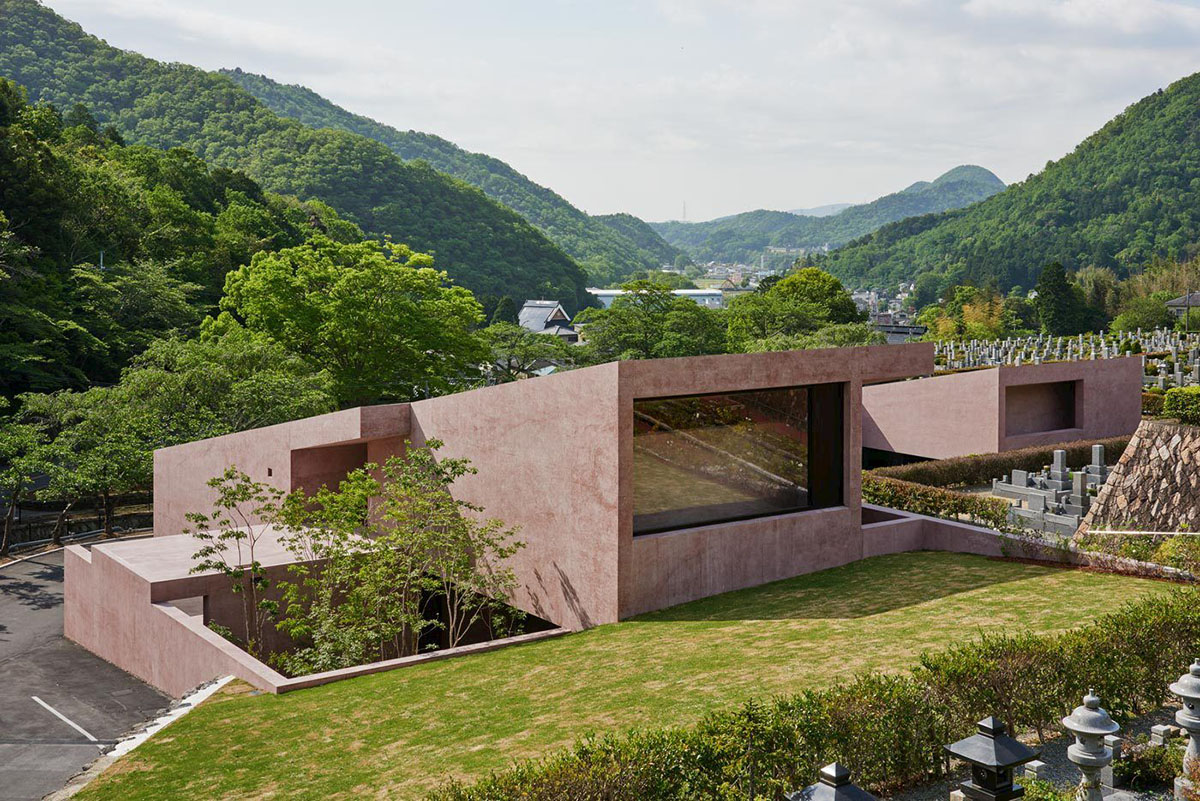
British architect David Chipperfield's firm David Chipperfield Architects has completed a new chapel and visitor centre in Hyogo prefecture of Japan, which constitutes a series of fragmented red-coloured concrete volumes aligned with a central staircase.
Commissioned by the Boenfukyukai Foundation, the project - called Inagawa Cemetery chapel and visitor centre - is located on a steep site in the Hokusetsu Mountain Range of the Hyogo prefecture, approximately 40 kilometres north of Osaka.

A cemetery is also one part of the project that is laid out across terraces and bisected by a monumental flight of steps leading up to a shrine at the highest point – an axis that orients the whole project.
Covering a total of 500-square-metre area, the Inagawa visitor centre and chapel are designed to create a visible threshold between the outer world and a quieter space within for contemplation.
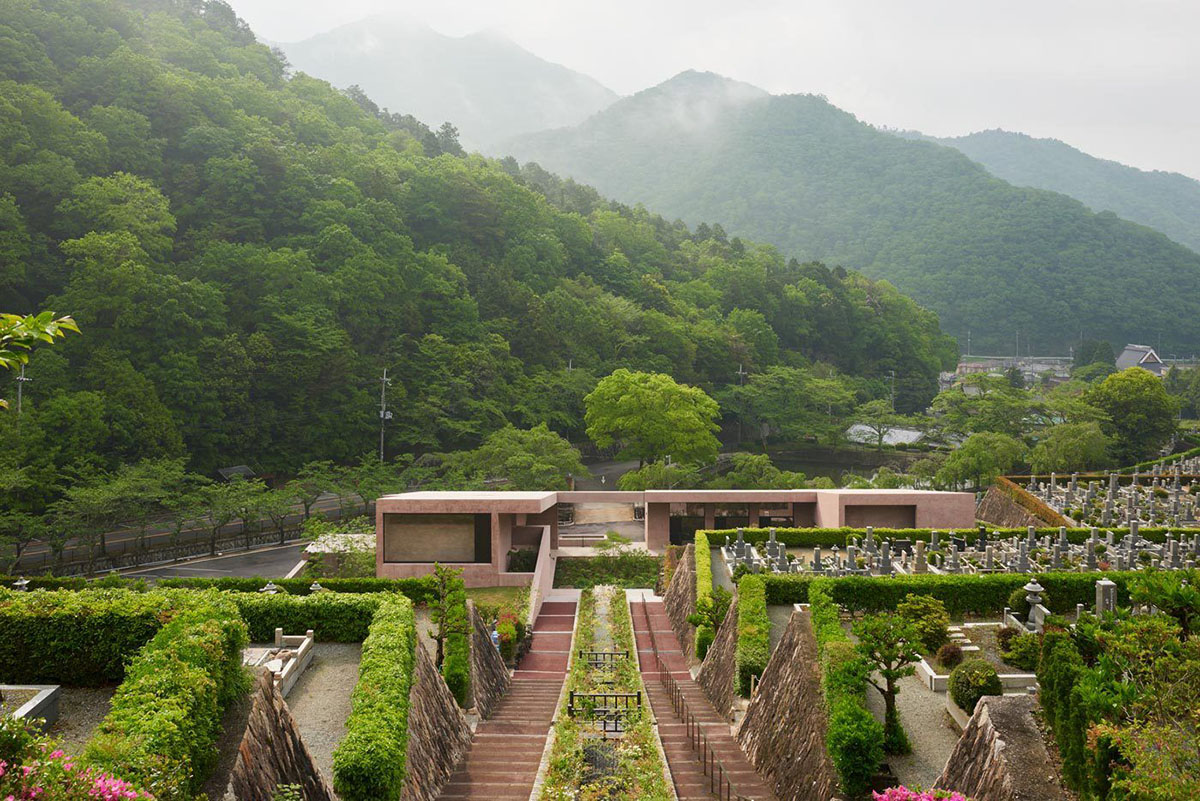
Scattered around the central staircase, and as a counterpoint to the shrine, the visitor and chapel spaces are linked around a courtyard. Visitors approach this space from an exterior platform that leads to a wide, framed central opening in the stepped south-east façade.
All single-storey rooms are arranged under a single, sloping roof plane, following the view line from the entrance up to the shrine. The rooms of the visitor centre are easily accessible from the courtyard while the secluded chapel remains separate. It can be reached via a discrete corridor, directly accessed from the outside or up a gentle ramp from the garden.

"An unadorned and quiet room with minimal heating and artificial lighting offers a non-denominational contemplative space, pure in its form," said David Chipperfield Architects.
Relying on indirect sunlight from the gardens on either side, the chapel visitor finds seclusion and their focus is drawn to the essential rhythms of time through the natural indicators of daylight fluctuation and seasonal foliage changes."
"The planting of all the gardens is inspired by the palettes and textures of Japanese meadows and woodlands and a selection of grasses, shrubs and wildflowers are carefully juxtaposed," added the studio.

Visitor centre is situated on the diagonally opposite corner of the courtyard. Two large rooms at the lower end of the roof are used for family gatherings and commemorations.
The visitors lounge offers an informal area for resting and eating. The memorial room, which can be separated into three smaller rooms by pleated curtains made with washi paper on fabric, offers space for formal feasts after rituals.
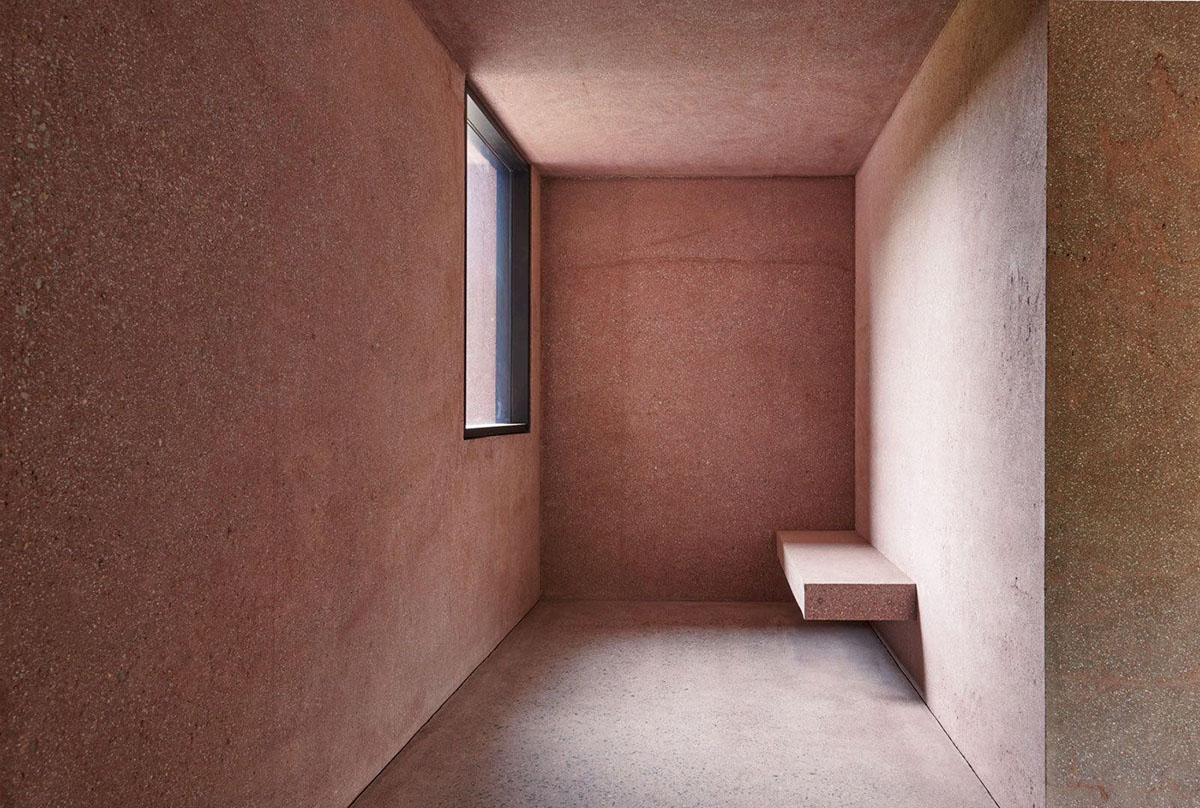
The architects use the same earth-like red coloured concrete on the floors, walls and roof as pure building elements – honed for internal floors and ground and sandblasted for walkway walls and soffits to give the overall structure a monolithic appearance.
A range of furniture designed specifically for the project consisting of simple, informal painted wooden chairs, benches, tables can be re-arranged depending on the occasion.

"Following the axial link between the two ends of the site, a rill carries water down the middle of the staircase from the top of the mountain directly towards the building," added the studio.
"As it approaches the lower part of the staircase near the chapel, the running water slows and pools as it collects into a trough, then is diverted through a new underground channel under the site to the nearby canal."
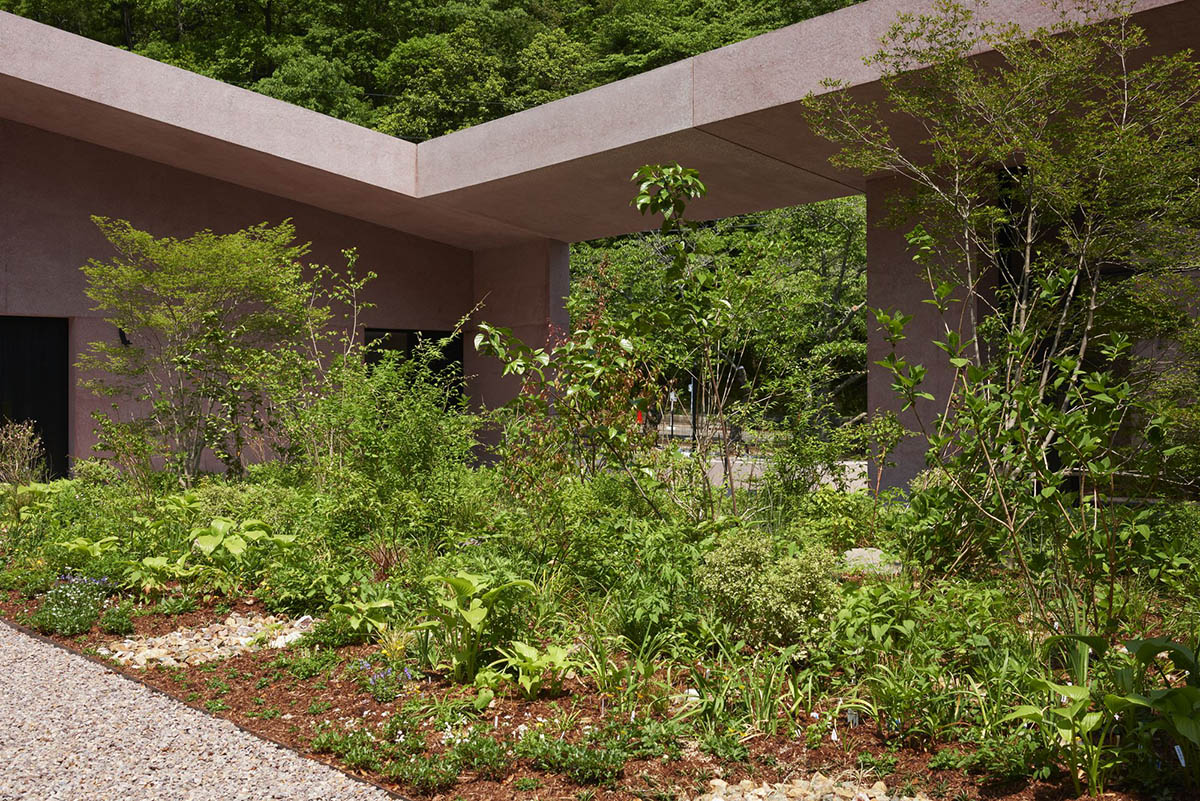
David Chipperfield Architects first unveiled images for the project in 2013, and construction work started in 2016. The studio worked with Marcia Iwatate and Kamimura Landscape Architects on the project.
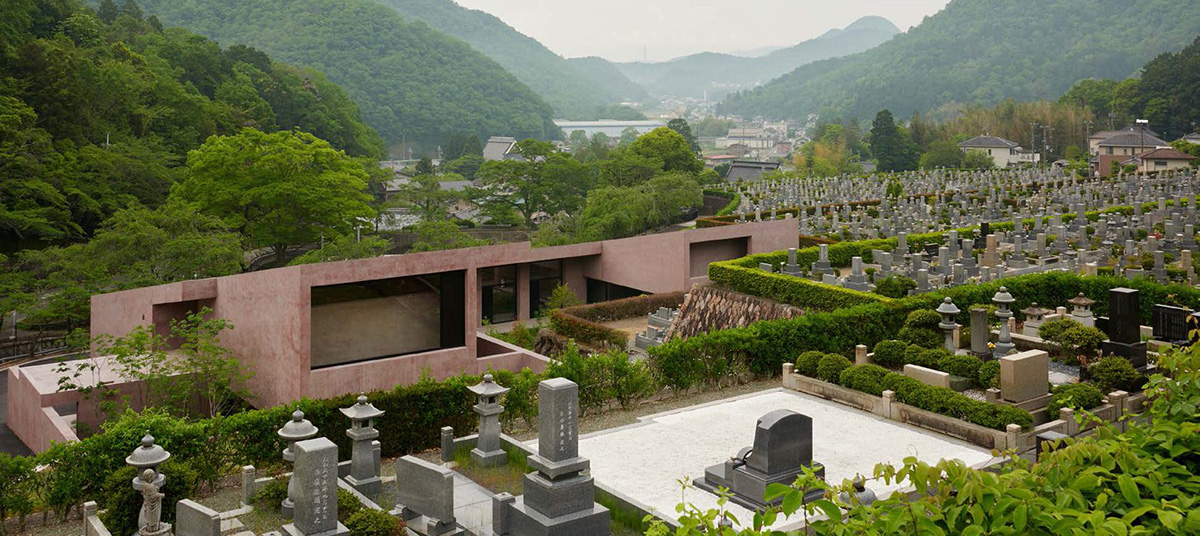
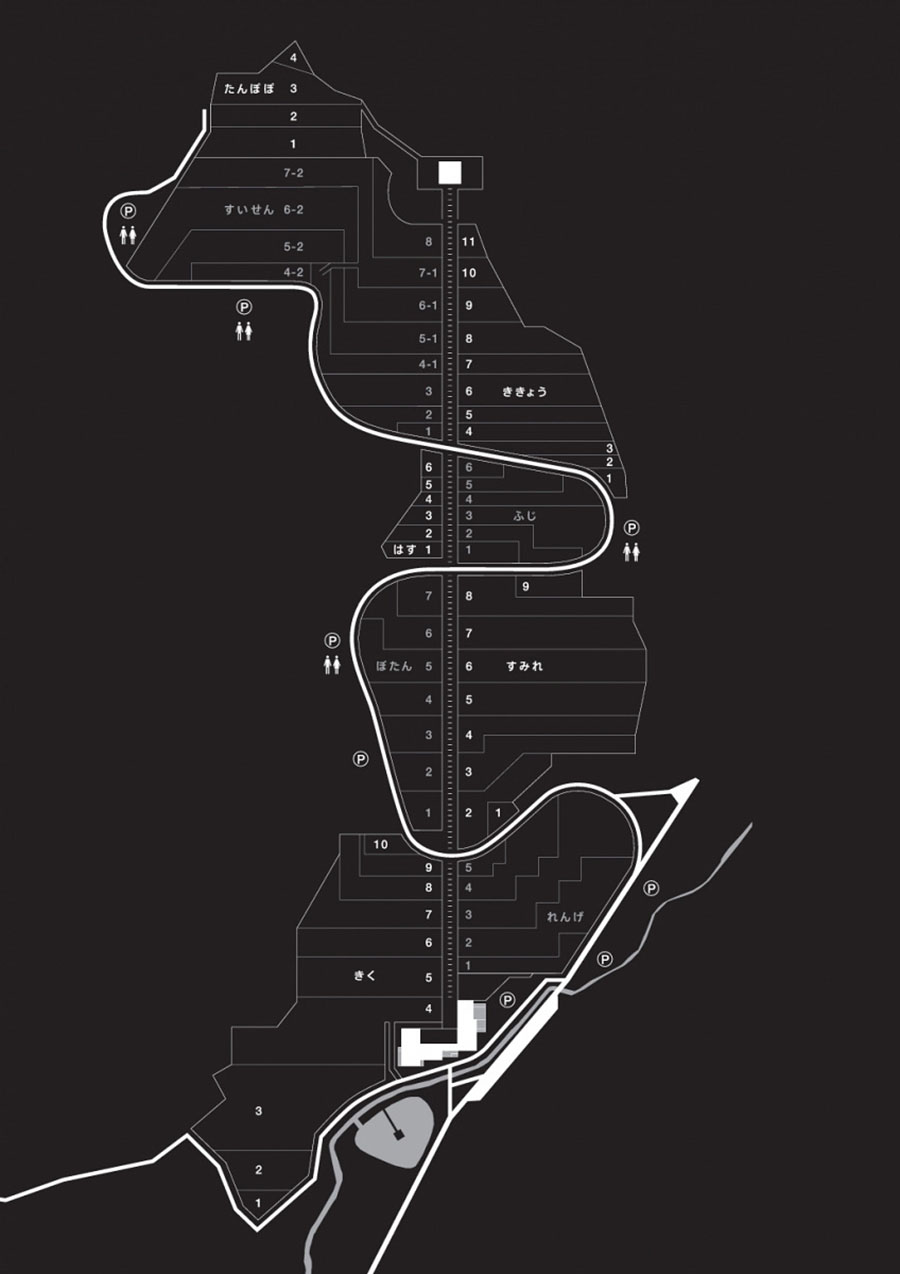


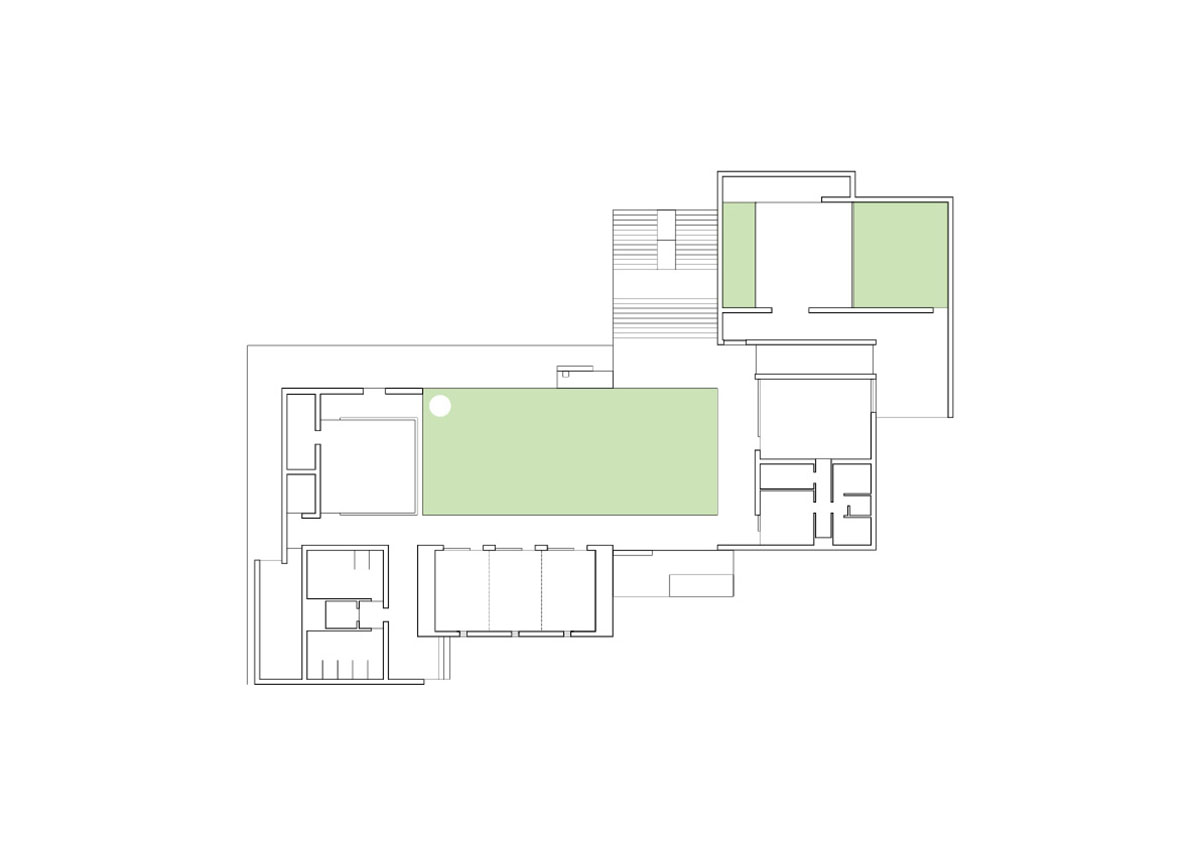
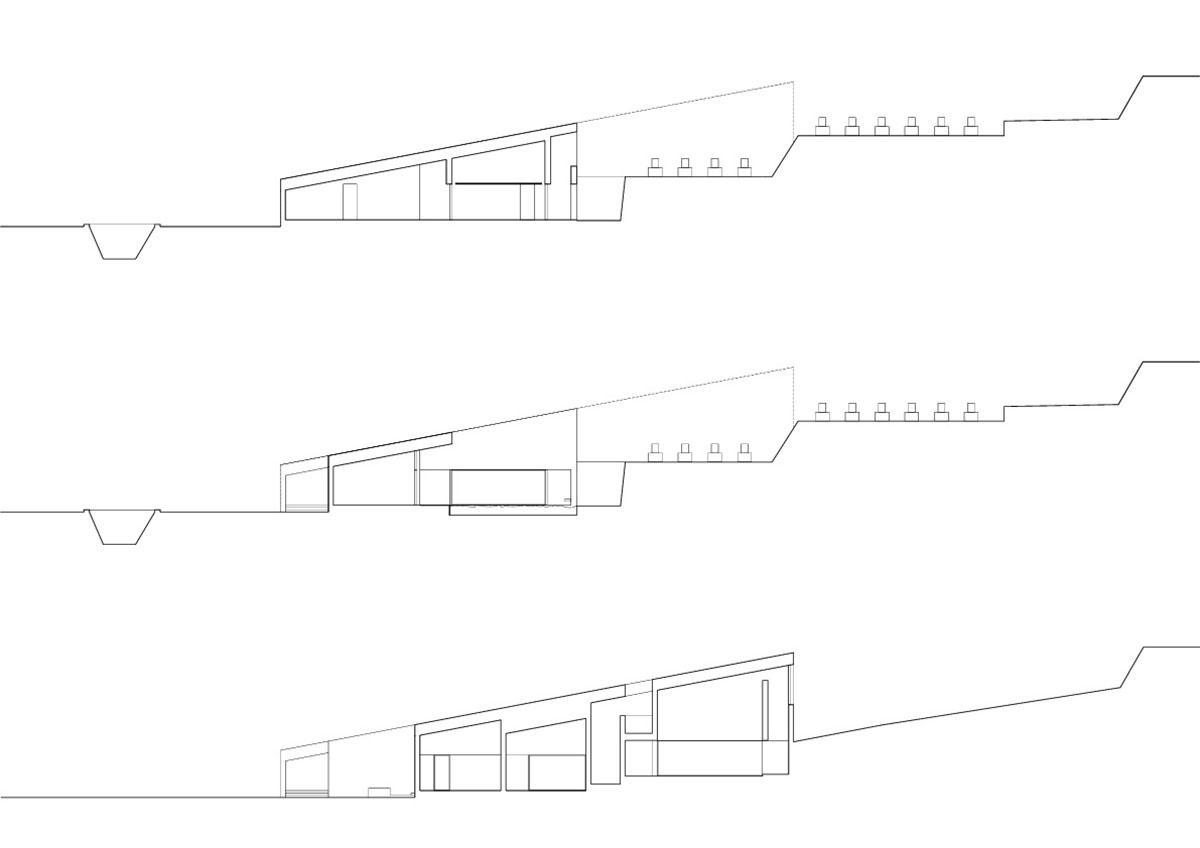
Project facts
Project name: Inagawa Cemetery chapel and visitor centre
Location: Hyogo, Japan
Client: Boenfukyukai Foundation
Architect: David Chipperfield Architects London
Director-in-charge: David Chipperfield
Project architect: Matt Ball (design lead), Tom Herre (detail design, construction)
Lighting: Viabizzuno Srl
Landscape architect: Marcia Iwatate + Kamimura Landscape Architects
Signage: Hayashi Takuma Design Office
Furniture: Cassina IXC Ltd.
Textile: NUNO Corporation
Structural consultant: Jun Sato Structural Engineering
MEP consultant: ES Associates
Contractor and contract architect: Obayashi Corporation
Associate architect: Key Operation Inc. / Architects
Project manager: Naoko Kawamura
All images © Keiko Sasaoka
